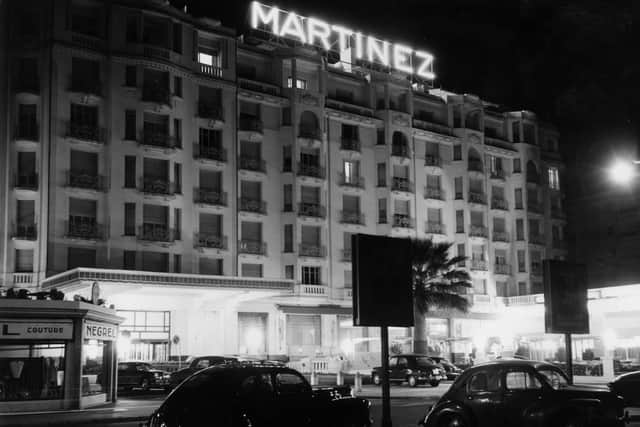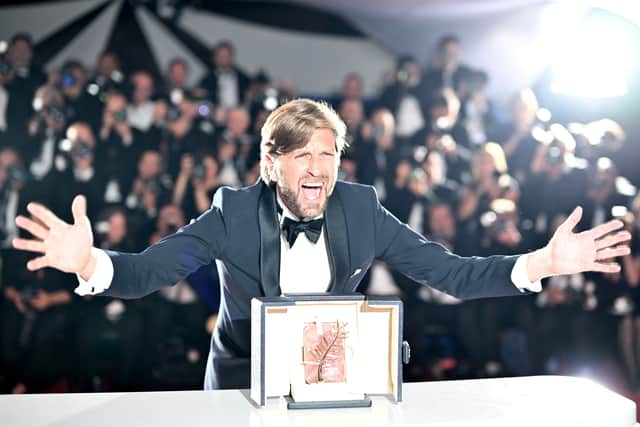A brief history of the Cannes Film Festival; from its anti-fascist movement to daily revenue
People in this article
and live on Freeview channel 276
Today marks the start of the film festival calendar, with the advent of the 2023 Cannes Film Festival taking place this evening with its opening night film, Jeanne du Barry, set to kick off the near two week film industry event. There’s quite the fanfare behind this year’s festival, with the opening night film set to make-or-break Johnny Depp’s cinematic comeback, along with premieres for future summer blockbusters Indiana Jones and The Dial of Destiny and Martin Scorsese’s latest collaboration with Leonardo DiCaprio and Robert De Niro, Killers of the Flower Moon.
Though there is some trepidation surrounding this year’s event; with the ongoing civil unrest stemming from protests regarding pension reform, numerous threats from unions have crept up to unnerve organisers of Festival du Cannes 2023. From electric company unions threatening to pull the plug, literally, on the event through to anti-domestic abuse protestors rumoured to have been planning a demonstration this evening against Johnny Depp, Cannes police have taken desperate, unpopular measures.
Advertisement
Hide AdAdvertisement
Hide AdAs reports across a number of media outlets, Cannes Police Force have clamped down and decided to effectively ban any protests that may hinder the progress of the festival's programme. Which adds an additional set of fireworks to the opening night event - if protests will take place akin to the May 68 unrest leading to the cancellation of that year’s event.
But away from the dramas outside the event, the line up for 2023 has brought together once again an eclectic array of blockbuster cinema and art-house features. Notable, albeit smaller inclusions this year includes Natalie Portman’s new film “May December,” directed by Todd Haynes and Pedro Almodovar’s much anticipated short film, “Strange Way of Life,” featuring ‘90s heart throb Ethan Hake and the current “internet daddy,” Pedro Pascal.
But if you’re new to the Cannes Film Festival, it can all seem quite daunting. Or, for some, a big deal about just another film festival. But Peopleworld have taken a look at the history of the event, including its celebrated Palme d’Or award, as a primer ahead of what is set to be a fortnight dominated by the festival in terms of cinema news.
When did the first Cannes Film Festival take place?


The origins of the Cannes Film Festival can be traced back to 1938 when Jean Zay, the French Minister of National Education, along with Philippe Erlanger, a high-ranking official and historian, and Robert Favre Le Bret, a film journalist, proposed the idea of establishing an international cinematographic festival. The French government found support from the Americans and the British, leading to the festival's creation.
Advertisement
Hide AdAdvertisement
Hide AdOne of the driving factors behind the festival's establishment was the French desire to challenge the Venice Film Festival, which was the only international film festival at the time. The Venice Festival had shown a perceived lack of impartiality with its fascist bias, particularly highlighted in the 1937 edition when Benito Mussolini interfered to prevent the French pacifist film "La Grande Illusion" from winning. The situation worsened in the 1938 event when Mussolini and Adolf Hitler overruled the jury's decision, awarding the top prizes to Italian and German films with clear political affiliations, despite regulations prohibiting awards for documentaries.
This controversial outcome led to the withdrawal of French, British, and American jury members from the festival in protest. In response to this snub, the French decided to establish their own free festival. On May 31, 1939, Cannes was chosen as the festival's location due to its appeal as a French Riviera resort town. The town hall, along with the French government, formally inaugurated the festival, which was named "Le Festival International du Film."
When did the Palme d’Or get created and what is it?


In 1954, the Cannes Film Festival decided to establish an annual award called the Grand Prix of the International Film Festival. To create a distinctive trophy, the festival's board of directors approached several jewellers, seeking designs inspired by the coat of arms of Cannes and the legend of Saint Honorat, as well as the iconic palm trees that line the Promenade de la Croisette. Parisian jeweller Lucienne Lazon, inspired by a sketch from director Jean Cocteau, designed the original Palme d'Or. It featured a heart-shaped bevelled lower extremity and a terracotta sculpture by artist Sébastien serving as the pedestal.
The first Palme d'Or was awarded in 1955 to Delbert Mann for his film "Marty." From 1964 to 1974, the festival temporarily replaced the Palme d'Or with the Grand Prix. However, in 1975, the Palme d'Or was reintroduced and has since remained the festival's prestigious symbol. Each year, the Palme d'Or is presented to the winning film's director in a case made of pure red Morocco leather lined with white suede.
Advertisement
Hide AdAdvertisement
Hide AdThe design of the Palme d'Or has undergone several transformations over the years. In the 1980s, the pedestal's shape gradually changed from rounded to pyramidal by 1984. In 1992, Thierry de Bourqueney redesigned the Palme and its pedestal in hand-cut crystal, and in 1997, Caroline Scheufele created a new design, with Swiss jewellery firm Chopard taking over production. The Palme d'Or features a palm made from 4.16 ounces (118 grams) of 18-carat yellow gold, with the base of the branch forming a small heart. It rests on a delicate crystal cushion shaped like an emerald-cut diamond. The trophy is now presented in a case made of blue Morocco leather. The current design, as it appears today, was first awarded to director Theo Angelopoulos in 1998 for his film "Eternity and a Day."
How much money does the Cannes Film Festival generate?
According to a breakdown of finances from The Hollywood Reporter in their May 16 2014 issues, the festival makes on average $33 million USD per day across the near fortnight stretch.
That daily total comes from revenue generated by direct subsidies from the Ministry of Culture’s National Cinema Centre, the Provence regional government and the county of Alpes-Maritimes, attendance fees, market fees from renting out the International Village pavilions and booths in the basement of the Palais that comprise the Cannes Film Market, sponsorships, television rights (courtesy of Canal+), and without adjusting for inflation at additional $2.76 million USD from the - which the city of Cannes can easily make back through tourism alone.
That means that across twelve days of the festival, an estimated $369 million USD is made - and again, this does not adjust for inflation since the article was published.
Comment Guidelines
National World encourages reader discussion on our stories. User feedback, insights and back-and-forth exchanges add a rich layer of context to reporting. Please review our Community Guidelines before commenting.
